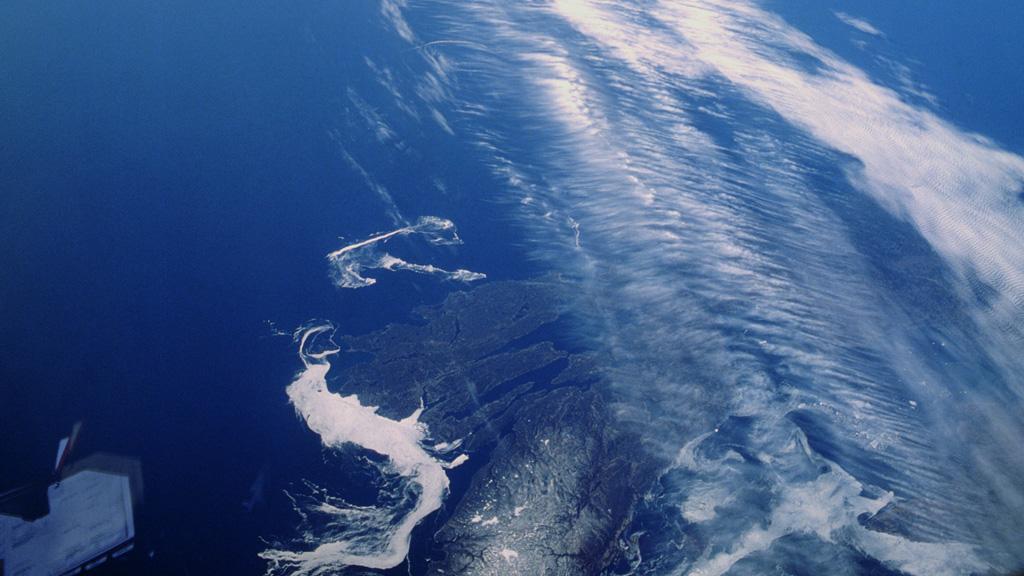Scientists find waste heat affects climate in winter
Cirrus clouds linger perpendicular to the jet stream over Canada. (Photo by NASA’s Goddard Space Flight Center.)
As cities around the world burn energy to keep the lights on and heaters running, waste heat is released into the atmosphere and picked up by powerful jet streams.
A recent study by climate scientists looks at how waste heat and unpredictable jet streams are interacting and contributing to global warming.
Veerabhadran Ramanathan, professor of atmospheric and climate sciences at the Scripps Institution of Oceanography, says heat from car engines, homes and factories ends up in the air as waste heat.
“During wintertime, we have this so-called jet stream, fast winds blowing around the planet,” he said. “This wind is able to carry the heat we dump over cities like New York, Chicago, Tokyo, Beijing, Shanghai — and blows this heat, within a few weeks, around the planet. That’s why what we think is a local phenomenon can become a regional and global phenomenon.”
The jet stream is dominant during the winter and as the waste heat moves, the heat changes temperature patterns, affecting the climate and even the weather.
“In the wintertime, we are under the firm grip of the jet stream in terms of when it snows, when you have high-pressure and warm climate,” he said. “Since it’s changing the jet stream its effect is particularly strong and visible during wintertime.”
Ramanathan said waste heat particularly affects the northern latitudes, the United States, particularly the northeast, as well as Canada, Europe and northern Asia. The study, “Energy Consumption and Unexplained Winter Warming over Northern Asia and North America,” shows that in these regions, there’s an abnormal warming during the winter. Ramanathan said waste heat is the likely cause of warming across the entire continent.
“What this study is showing is that this waste heat might have moved the jet stream a little bit southwards. When the jet stream moves south is when you get huge cold spells in areas like Florida, Texas,” he said.
There are other sources contributing to the unpredictable movement of the jet stream, Ramanathan said, but the addition of waste heat adds to the jet stream’s movement.
“The warming you see in these regions during spring and summer and fall is still largely due to global warming,” he said. “The good news is that our models are able to explain very closely how our planet has been warming. The bad news is, it confirms that our models may be right after all, and that global warming is as large as they think it is.”
